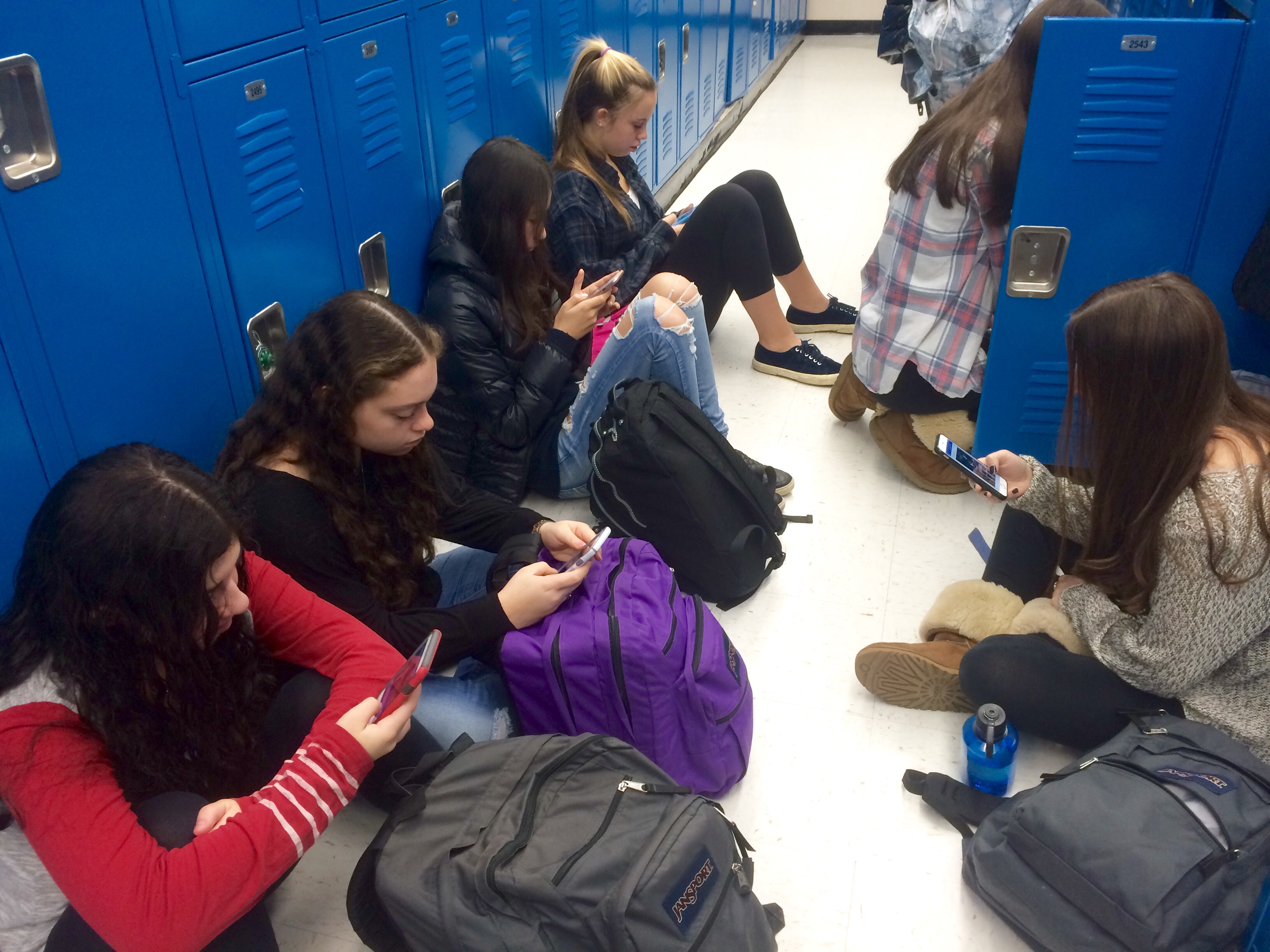Most high school students are familiar with the following scenario: a group sits down to eat a meal together. These friends are laughing, telling stories, and catching up—but not with each other. All communication is transmitted over the phone, via text, Twitter, Instagram, Facebook, and other messaging and social media platforms.
It is not unusual to have your cell phone an arm’s length away “24/7.” Instant gratification seems to be the universal desire these days. Smartphones now provide all people with a myriad of functions, like staying up-to-date on the latest news, catching up with friends, typing notes, scrolling through various social media sites, all on one device.
Although using these devices to send a quick text seems like an easy solution to communication problems, it often has the adverse effect. Oftentimes, words can be misinterpreted when not said in person, thus creating communication gaps and questions regarding the tone of a text.
A recent set of studies by Andrew K. Przybylski and Netta Weinstein of University of Essex suggests that mobile devices can actually put a dent in close relationships. They found that even having a phone nearby could be detrimental to attempts at face-to-face communication.
Przybylski and Weinstein asked pairs of strangers to carry out ten-minute discussions about an event that had previously occurred. The caveat? These couples had to leave their belongings in a waiting area and communicate in a private booth.
Inside the speaking spot, two chairs were found face-to-face, several feet away from one another. When sitting in one of the chairs, a person could see a desk with a book and another item on it in their peripheral vision.
Some pairs engaged in conversation with an ordinary cell phone as the second item, while others were in the presence of a generic pocket notebook. At the expiration of the ten-minute period, each of the strangers completed a questionnaire about the relationship quality and feelings of familiarity they had experienced. Pairs who chatted with a cell phone present reported a lower relationship quality and felt less familiar.
Many members of generations that did not mature with a cell phone in hand believe that the advent of social media and smartphones is squashing an ordinary person’s social skills.
Nurse Nancy Garretto said that when she is in a restaurant, she sees that “everyone is texting and no one is talking to the people that are with them. All of them are looking at social media, and just posting things on various social medias.”
“Phones affect a person’s communication in a bad way because many people are involving their whole lives on social media and texting… no one has conversations in person anymore and I think that this is a growing problem,” said sophomore Emme Gessow.
Another issue with cell phones is that they help to create false perceptions of people. Cell phone users can alter the way that their lives’ appear by making make polishing the reality of their life through social media.
This problem has spawned a movement on Instagram entitled “Social Media is NOT Real Life,” inspired in part after Essena O’Neill, an “insta-famous” Australian.
Recently, O’Neill deleted all of her photos. She then began posting a series of exposé-style pictures, accompanied by captions that explained that her images were a false representation of her life. O’Neill explained that attempting to live up to the standards she portrayed through photographs on her Instagram were causing her undue stress, anxiety, and body image issues.







